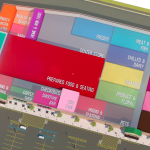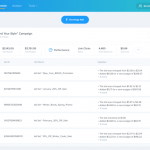Google Ranking Algorithm Demonstrates Higher Intelligence
Google Ranking Algorithm Demonstrates Higher Intelligence
by Laurie Sullivan @lauriesullivan, February 14, 2017
Searchmetrics has released new analysis of search results identifying key factors that online retail and ecommerce marketers should consider using in their search optimization strategies to help improve visibility in Google U.S. searches.
The research, published in a paper — Ecommerce Ranking Factors 2017 – Ten Things eCommerce Sites Need to Know to Rank on Google — is in response to Google’s ability to interpret search intent behind individual queries by using artificial intelligence (AI) and machine-learning techniques in AI-learning technology RankBrain.
The new study is based on an analysis of the top 20 search results on Google.com for more than 6,000 online retail and ecommerce common search terms.
Google, as many have found, can now more precisely determine the search intention behind the keywords or phrases that people query. This means that simply focusing on general, universal ranking factors is not enough for marketers to optimize content.

Based on the report’s findings, online retail and ecommerce sites should:
1) Keep content well-structured, short and sweet. Some 62% of the top 20 Google results for online retail/ecommerce focused searches have at least one list on the page, compared with 52% for general searches. The results for online retail queries tend to include 70% more bullets per list on average than those for generalized searches.
2) Organize the site with menus and internal links. Pages listed in the top 10 search results for online retail and ecommerce queries have 70% more internal links than those found in general searches. Well-structured internal links and menus help visitors easily locate and browse through products and related products.
3) Ensure that the online checkout feature is highly visible on the page. Among the top 20 search results for online retail queries, 56% have an online store checkout section that is visible above the fold without scrolling.
4) Marketers can design a slightly larger Web page. In general, Google seems to reward pages that have a smaller file size — which load faster — with higher rankings, but the company makes some allowances for retail and ecommerce searches. File sizes for pages that appear in the top-ten search results for online retail queries are on average 30% larger than those for general queries.
5) Video may not be as important as marketers think. Embedded video content is found in 49% of sites that appear in the top 10 Google search results. For ecommerce and online retail searches, it is only present in 35%. Video is useful for demonstrating product installation or set up, but Google has learned the most relevant results often tend to be retail sites that carry catalogue style listings with images.
6) Avoid hosting ads on the site’s Web pages. Just 3% of sites that feature on the first page of Google for online retail searches carry Google AdSense advertising, compared with 9% of first page results for general searches.
MediaPost.com: Search Marketing Daily
(50)













